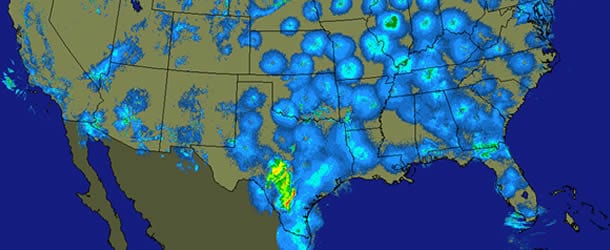A new study (partially funded by the SJV) has been published by SJV partner Janet Ruth and colleagues in The Condor. They used radar and satellite land-cover data to determine the habitats with which birds are associated during migration stopover. Bird densities differed significantly by habitat type at all sites in at least one season. In parts of Arizona and New Mexico, upland forest supported high densities of migrants, especially in fall. Developed habitat, in areas with little upland forest, also supported high densities. Scrub/shrub and grassland habitats supported low to intermediate densities, but because these habitat types dominate the southwestern landscape, they may provide stopover habitat for larger numbers of migratory birds than previously recognized. These results are complicated by continuing challenges related to target identify (i.e., distinguishing among birds, arthropods, and bats). Their results suggest that it is too simplistic to:
- Consider the arid West as a largely inhospitable landscape with only relatively small oases of habitat that provide the resources needed by all migrants.
- Think of western riparian and upland forests as supporting the majority of migrants in all cases.
- Consider a particular habitat unimportant for stopover solely on the basis of low densities of migrants.
Access the complete manuscript on the USGS website.
Citation:
Ruth, J.M., R.H. Diehl, and R.K. Felix, Jr. 2012. Migrating birds’ use of stopover habitat in the southwestern United States. The Condor 114(4): 698-710.

